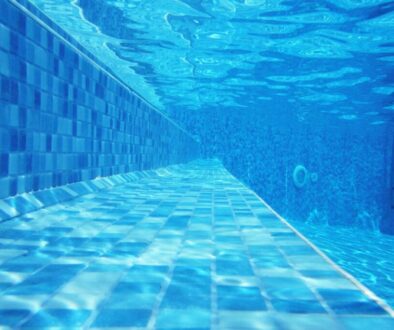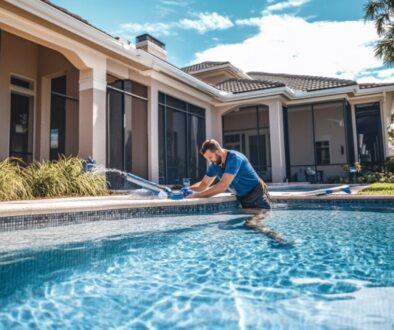How To Remove Dead Algae In Pool? Expert Cleaning Tips
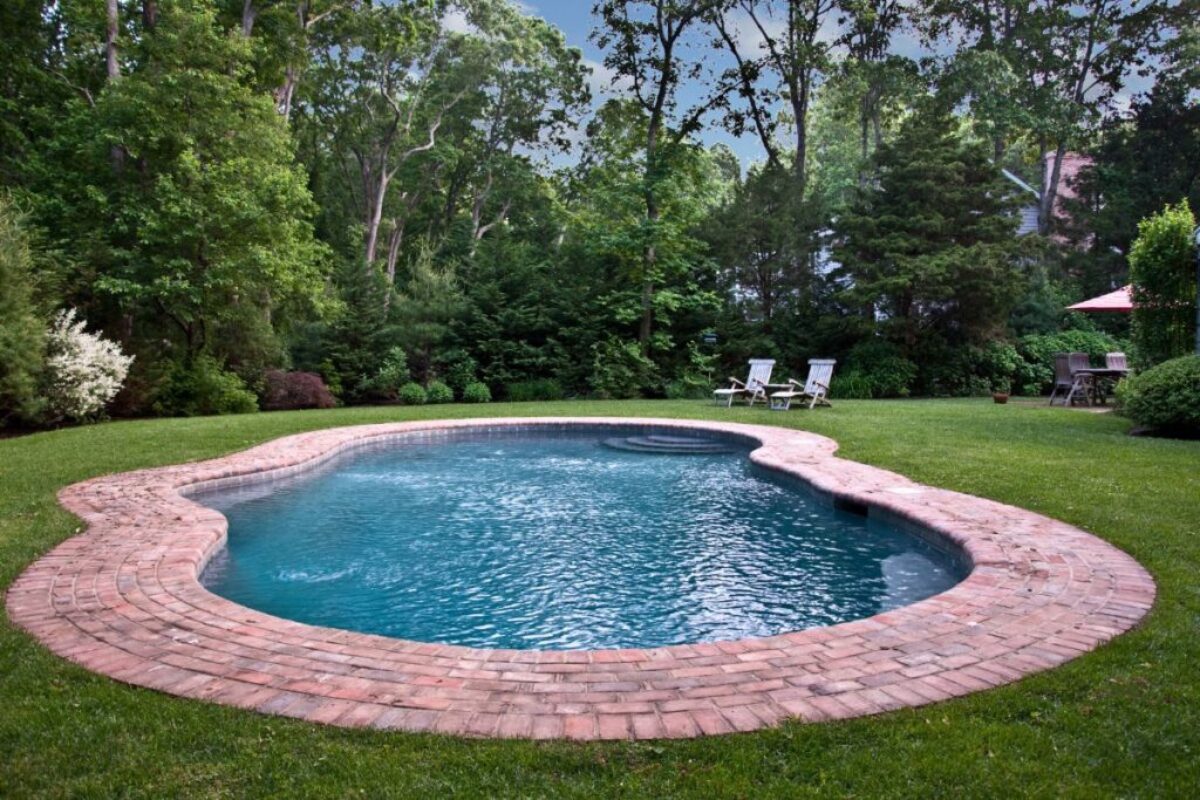
Published Sept. 19, 2024
A sparkling, pristine pool is a backyard paradise, but maintaining it can be challenging. One of the major concerns for pool owners is dealing with stubborn algae growth. If left unchecked, these pesky invaders can ruin your refreshing oasis. They can turn it into a murky nightmare, affecting its beauty and the health of everyone who enjoys it.
In this article, we’ll help you understand algae, focusing specifically on how to manage dead algae in pool. We’ll also explore the various types of algae and effective methods for removing them from your swimming space.
What Is Algae?
Algae are common yet unwelcome intruders in swimming pools. These microscopic plants flourish in water, particularly under favorable conditions. They can infiltrate a pool through wind, rain, or contaminated equipment. To effectively manage algae growth in your pool, consider enlisting the services of reputable Boca Raton pool cleaning providers for a proactive approach.
Causes Of Algae In Pools
- Poor circulation. Stagnant water serves as an ideal breeding ground for algae, leading to dead zones where they can thrive.
- Chemical imbalance. Incorrect levels of pH, chlorine, and other chemicals can foster algae growth.
- Neglect. Infrequent cleaning and insufficient filtration significantly contribute to the problem.
- Environmental factors. The presence of nearby trees and plants can increase the number of algae spores in the water.
- High temperatures and frequent use. Warm water and regular pool use introduce additional contaminants, which promote the growth of algae.
Signs Of Algae In Pools
- Water color changes. A significant color shift, often resulting in a greenish hue.
- Slippery surfaces. Slimy floors and walls indicate algae growth. The slick texture comes from the algae’s protective layer.
- Unpleasant odor. Musty odors can indicate the presence of algae. These odors arise from the decomposition and growth of these organisms.
- Cloudy water and floating debris. Reduced visibility in the water and the presence of particles suggest algae. Cloudiness often happens when algae start to die and break down. The floating debris may consist of detached algae blooms from the pool surfaces.
Types Of Algae In Pools
Knowing the various types of algae that can grow in pools is essential. It helps maintain water quality and ensures a safe swimming environment.
Here are the common types of algae found in pools, their characteristics, and how to manage them effectively.
- Green algae. This is the most common type of algae found in swimming pools. It thrives in warm, sunny conditions and can multiply if not addressed quickly. Standard pool chemicals like chlorine can effectively treat algae. However, consistent maintenance is crucial. Brushing and vacuuming help prevent its return.
- Black algae. Black algae is a tough organism that grows in pool cracks and crevices. It especially thrives in corners and near ladders. Its dark color requires a strong treatment strategy. This includes scrubbing with a wire brush and using specialized algaecides for effective removal.
- Yellow algae. Commonly known as mustard algae, this type looks like yellowish patches on pool walls and floors. It often resists standard chlorine levels. To eradicate it, more potent chemicals and more frequent superchlorination are necessary.
- Pink algae. Pink algae is often mistaken for traditional algae. It’s a bacteria that creates a pink film on pool surfaces. This bacteria thrives in moist conditions. However, it can be controlled with regular cleaning. Maintaining balanced water chemistry and ensuring proper circulation and filtration also helps.
To keep pools clean and safe, owners must understand the different types of algae. They should also use effective management strategies and conduct regular water testing.
What Does Dead Algae Look Like In A Pool?
Dead algae in your pool often settle at the bottom, giving it a grayish, dusty look. This buildup can be quite noticeable, resembling fine particles that disrupt the otherwise clear water. Besides affecting aesthetics, dead algae can cloud the water, making it hard to see the bottom and posing safety risks for swimmers.
Dead algae must be removed quickly. If left unattended, it can cause more problems, including declining water quality and potential bacterial growth. Regular cleaning and maintenance are vital for safe swimming conditions and keeping the pool inviting.
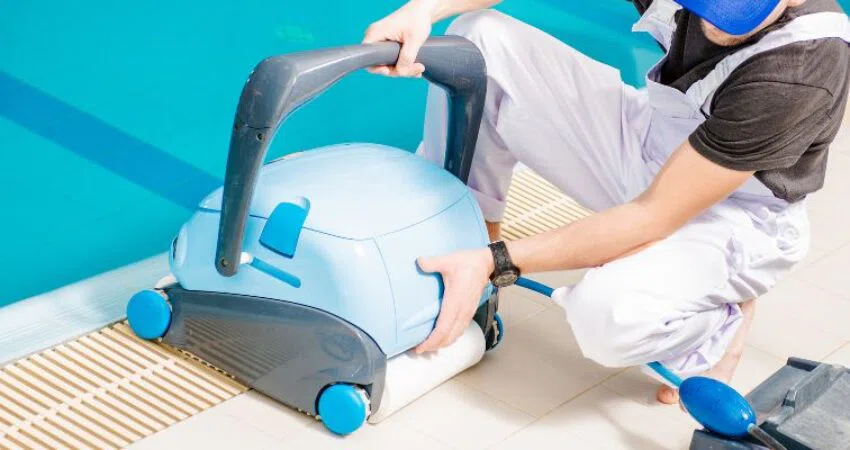
Steps On How To Get Rid Of Dead Algae In Pool
If you’ve noticed dead algae in pool, don’t worry—it’s a common issue that can be quickly resolved.
Below are the essential steps to effectively eliminate dead algae and restore your pool to its sparkling clean state.
- Utilize a pool net. Start by using a pool net. Gently scoop up any large clumps of dead algae. Look for algae floating on the surface or settling at the bottom. This initial step is crucial for preventing these clumps from breaking apart and dispersing further into the water.
- Begin brushing. Next, take a pool brush and scrub the walls and floors to eliminate any lingering algae. Pay special attention to corners and crevices where algae is likely to gather. Use a brush appropriate for your pool surface to prevent any damage.
- Vacuum the pool floor. After brushing, use a pool vacuum to thoroughly clean the pool floor. Depending on your available equipment, choose between a manual or automatic vacuum. This step is essential for effectively removing dislodged algae and debris from the pool.
- Clean the pool filter. After vacuuming, it’s essential to clean the pool filter. Backwash the filtration system or clean the cartridges following the manufacturer’s guidelines. This process removes trapped particles, including dead algae. It ensures your filtration system works efficiently.
- Operate the pool pump and filtration system. After cleaning the filter, run the pool pump and filtration system for 24 to 48 hours. This process will circulate the water effectively and remove any remaining debris.
- Test the water: Finally, test the water with a pool test kit. Check the pH, chlorine, and alkalinity levels to ensure they’re balanced. Adjust the amount of chemicals to maintain optimal water quality, keeping your pool safe and inviting for everyone.
Following these steps can effectively address dead algae in your pool, keeping it a sparkling oasis for relaxation and fun.
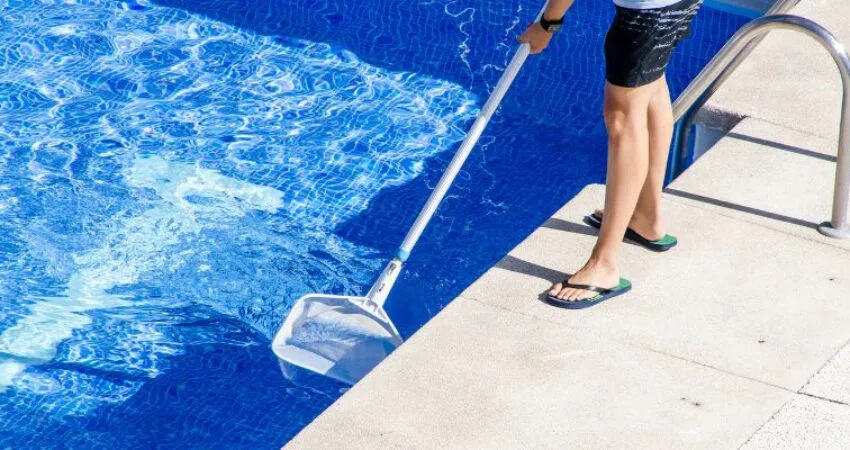
Steps On Removing Algae From Pool Without Vacuum
Removing dead algae in pool may seem daunting, but it can be simple with the right approach. Whether it’s a small patch or a more extensive infestation, there are practical steps to restore your pool to its sparkling clean state without a vacuum.
Here are the steps for cleaning dead algae in pool without vacuum.
- Test and balance pool water. Start by testing your pool water with a reliable kit to check the pH, chlorine, and other chemical levels. Adjust the pH to 7.2 to 7.6 and ensure chlorine levels are sufficient to combat algae growth effectively.
- Scrub the pool. Use a stiff-bristled brush to scrub the pool’s walls and floor. Focus on areas with algae buildup. This process helps dislodge the algae and allows chemicals to penetrate more effectively and eliminate it. Be sure to focus on corners and steps, as these spots often serve as prime breeding grounds for algae.
- Apply algaecide. Choose a suitable algaecide tailored to the type of algae you’re dealing with—green, yellow, or black. Adhere to the manufacturer’s guidelines for application to guarantee effective treatment. This essential step targets algae at its source and helps prevent future growth.
- Filter and circulate. After applying the algaecide, keep your pool filter running continuously for at least 24 hours. This circulation is crucial for evenly distributing chemicals in the pool. It ensures that even hidden areas where algae might grow receive treatment. A properly functioning filter is vital for effectively capturing dead algae and debris.
- Shock the pool. Conduct a shock treatment to restore water clarity and remove any remaining algae. Add an increased dose of chlorine to the pool. This method effectively eradicates lingering algae and bacteria. Always adhere to safety guidelines when handling shock chemicals.
- Clean the pool filter. After completing the treatment, clean the pool filter. This step is essential for eliminating any debris collected during filtration. Keeping the filter in optimal condition is crucial, as a clean filter will enhance the pool’s clarity and help prevent future algae growth.
- Retest the water. After treatment, retest the water to ensure the chemical balance has returned to normal. Make any necessary adjustments to maintain a safe swimming environment. This step is essential for preserving a healthy pool.
- Establish regular maintenance. A routine maintenance schedule is crucial. It helps prevent algae outbreaks. This includes regular cleaning, consistent water testing, and proper circulation. By being proactive, you can enjoy a crystal-clear pool all season.
Following these steps will effectively eliminate algae and prepare to maintain a clean and inviting pool.
Frequently Asked Questions About Dead Algae In Pools
What happens to dead pool algae?
Dead algae get partially trapped by pool filters. However, they can also accumulate on the floor and walls. This buildup requires thorough cleaning and filtration.
How does algae appear when it dies?
When algae die, they typically take on a grayish hue and settle at the bottom of the pool, which must be removed to avoid cloudiness.
Is it safe to swim in a pool with dead algae?
No, swimming in a pool contaminated with dead algae is not recommended due to the potential health risks involved.
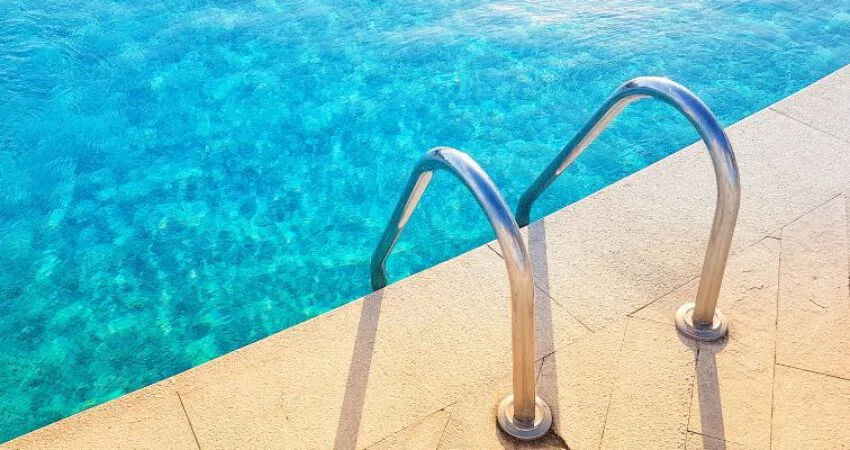
Keep Your Pool Algae-Free: Essential Steps For A Crystal-Clear Oasis
Managing and eliminating dead algae in pool from your pool requires an understanding of its causes and types. Effective removal techniques are essential, along with consistent maintenance to prevent algae growth. This approach ensures your pool remains stunning and safe. Following these strategies allows you to enjoy crystal-clear waters and maximize your pool experience. Take action today to keep your pool in top shape!
Hire Boca’s Favorite Pool Builders
Excel Pool and Patio Solutions is your trustworthy provider of pool services in Boca Raton. We are experts in pool and patio remodeling and can handle your resurfacing needs as well. Our technicians are vetted and trained for your guaranteed satisfaction. Get to know us by browsing our website or reaching out to us with any questions.
Contact our team today to request a free estimate for pool construction, maintenance, repairs and more.
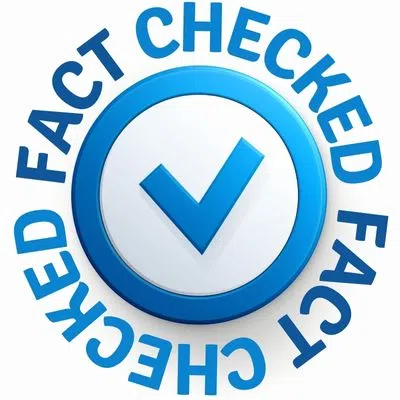
Fact Checked By Experts
This is original content and has been diligently fact checked by our internal team of experts. Discover more about the rigorous editorial standards we uphold for our website here.

About The Author
Hello! I am Corinne, a graduate of Riverside College. My career has evolved into focusing on writing, where I deliver high-quality and meticulously researched content. I have a proven track record of developing helpful articles that engage a wide variety of readers.

